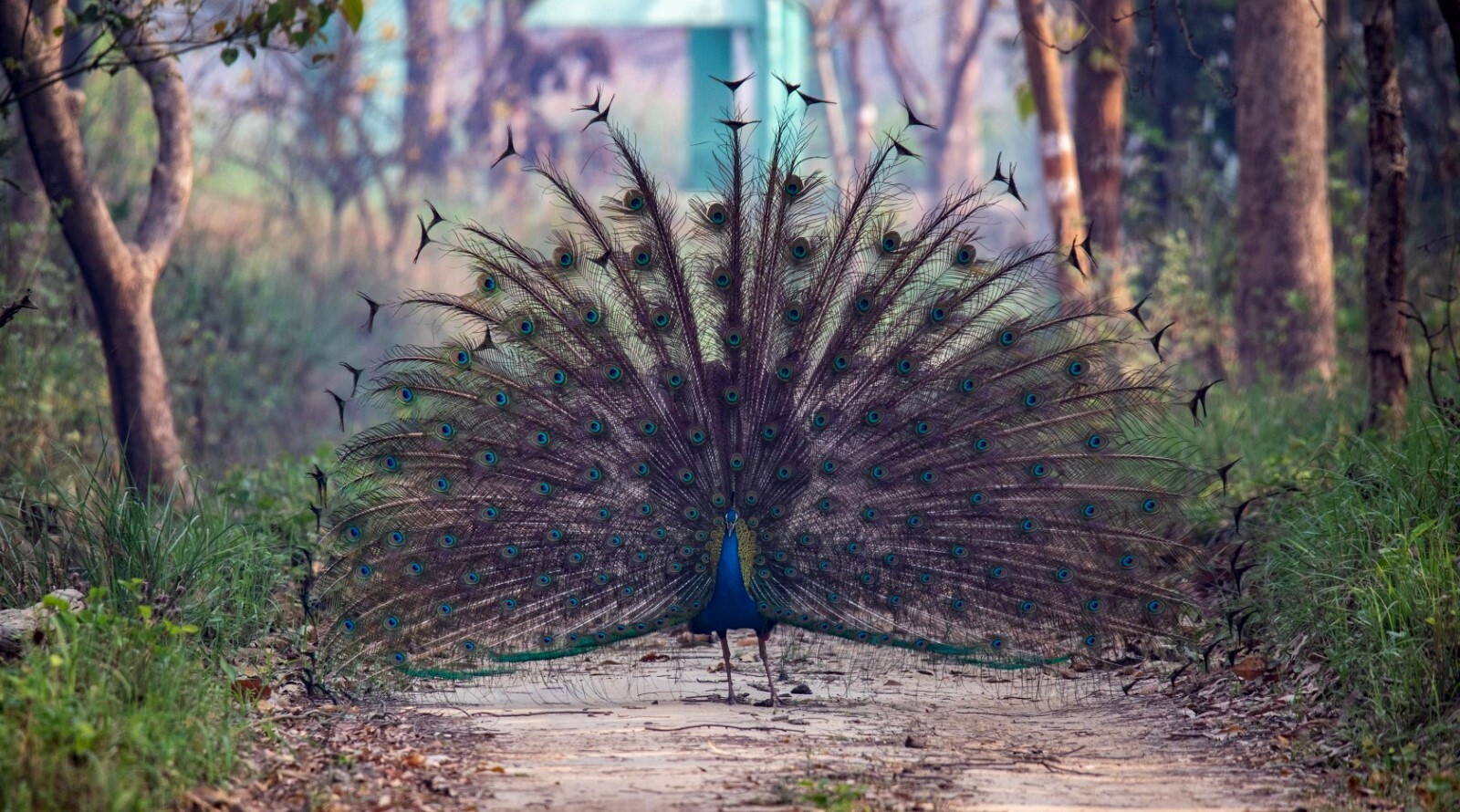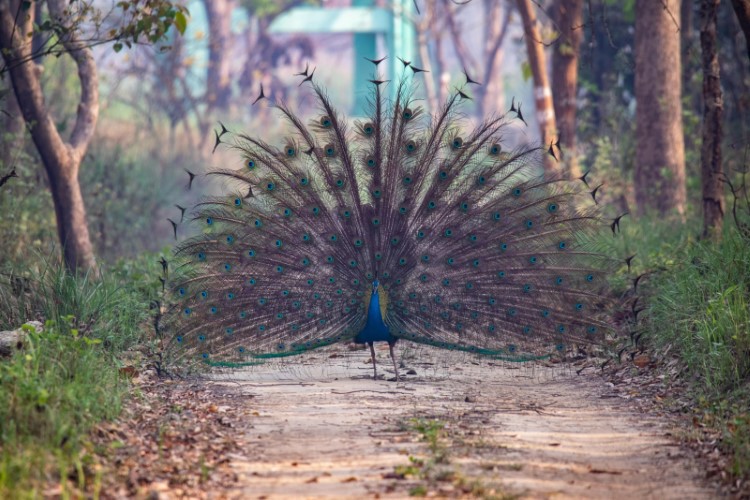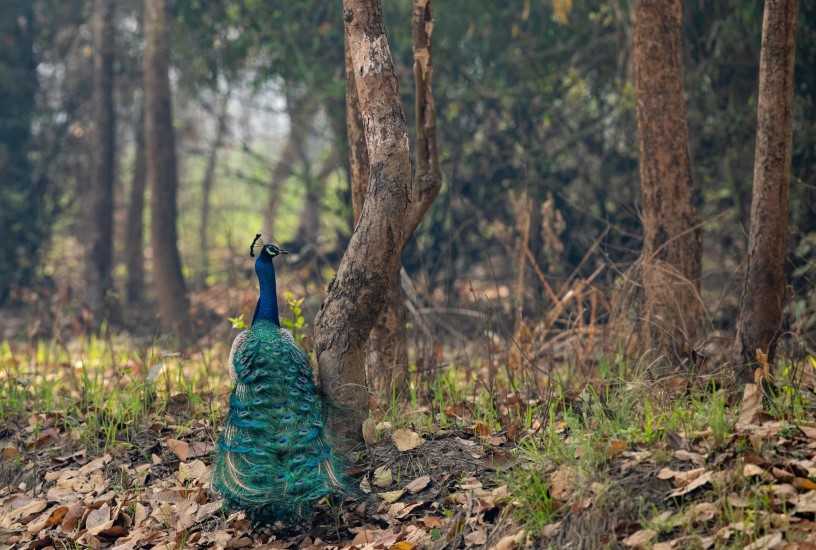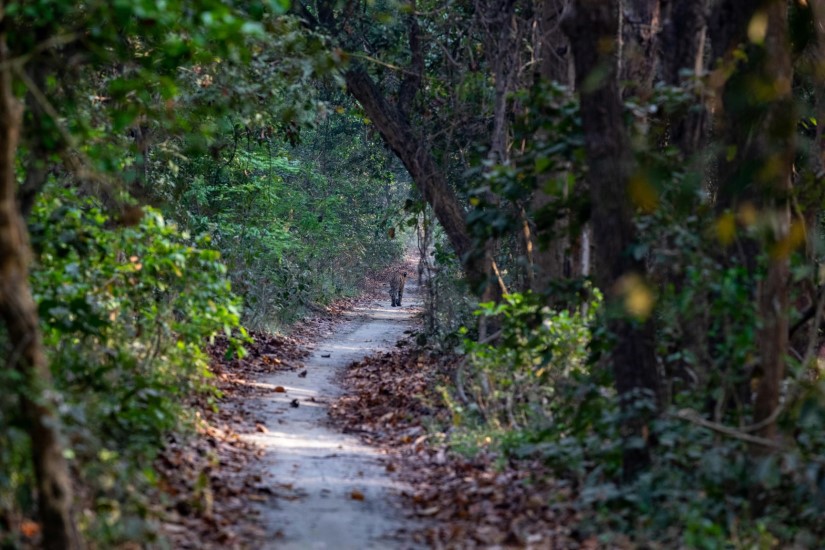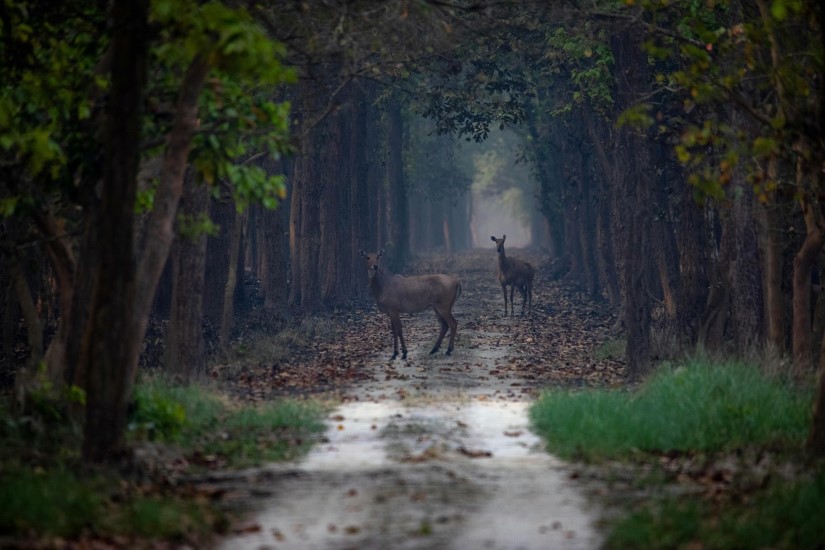Pilibhit is a relatively remote town of 200,000 in the Tarai region of North-Western Uttar Pradesh called Rohilkhand, and shares borders with Nepal and the Himalayan foothills. The primary attraction for my friend Rajiv Vaidya's and my visit was the 730 square kilometers of forest reserve (and 45th tiger reserve in India) abutting the town. We were quite surprised to witness the proximity of the forest and the town, the forest both hemmed in as well as crisscrossed by highways, narrow roads and the resultant intense human activity.
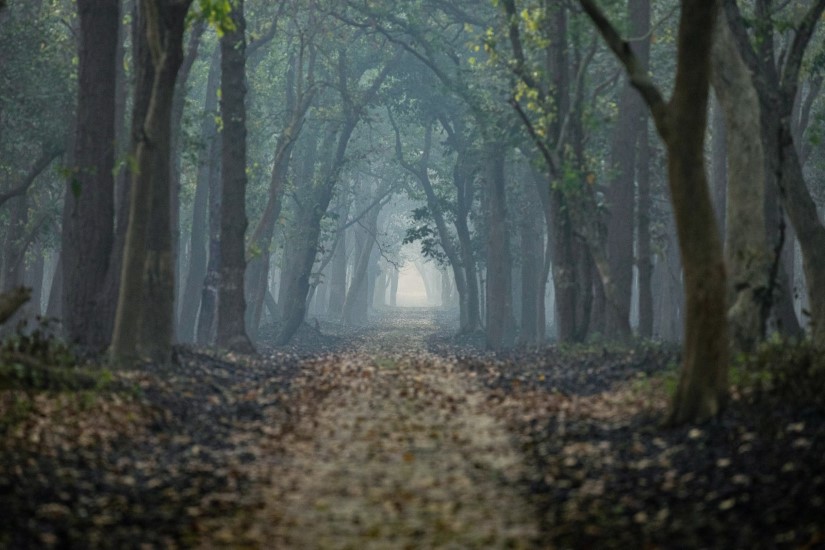
The Incongruences of Pilibhit, April 2022
The Pilibhit forest is stunningly beautiful and varied in its ecology, with tall and elegant Sal trees establishing a dense canopy in most of the wooded areas. The thick ground cover of its broadleaf-fall generates a characteristic sweet, decaying smell of the forest floor. The forest had a dreamlike, tranquilising effect as we traversed it for miles on-end at a time before we arrived at a grassland or swamp. It would have been that much more immersing if we could have walked instead of being on a motor vehicle, as some forest reserves yet allow. We drove slowly though certainly not quietly observing the forest, the leaves crunching under the tyres and making a noise that surely scared off many animals. The calming dharma of Prakriti and its many languages is absent in our urban lives, we only fully recognize this absence when we are actually in the forest. What was pleasantly unusual was the thin presence of tourists in the forest areas we frequented, a welcome break from more mainstream forest reserves. In some ways, the rawness of the Pilibhit forest reserve is its main appeal.
Then there are the grasslands, in parts of which an elephant would not be visible; the swamps of the Terai; and the grand Sarda river and canals life-giving waters.
We saw all manners of animals and bird life, and we revelled in the peace and tranquility of the forest: many species of deer, sambhar, wild boar, tiger, monkey, crocodile, scores of species of birds and the incredibly beautiful peacocks and peahens of Pilibhit. What makes them so much bigger, healthier with more stunning colors than the ones that frequent my village in Haryana was food for thought. Perhaps because they live and forage in a real forest.
After the separation of Uttarakhand in 2000 CE, Pilibhit was one of the few districts left in Uttar Pradesh with forests. Much of the Tarai was cleared by pioneering settlers (many from the undivided Punjab) to whom the government gave land rights in the Fifties and Sixties overcoming concerns of the destruction of the natural Tarai ecology. While these pioneers grit and hard work make for inspiring human stories of overcoming adversity, their unique work ethic is exactly what created large areas of mono-cropped farmlands interspersed with the forest. This exacerbated the very unequal human-animal conflict brought about by human livelihood activities. The forest and animals lose a bit each day and year but, ultimately, so do humans. It is the very least we can do to preserve the forests that remain as reserves, and give priority here to the lives of other living beings. I'm not talking about tribals whose livelihoods are mostly in rhythm with the forest as none lived in the Terai.
One would think the State government would work hard to protect their few forest and manage responsible and controlled nature tourism. Instead, what we experienced was a disregard and indifference for nature that seems to have become an integral part of human activity. As with most of India, especially in Uttar Pradesh, the crush of population is smothering; this is at its highest in the Gangetic plains which is the most populated area on earth. Pilibhit district has a population density of 559 people per square kilometer (USA is 36, Europe is 111, UP is 800), though it certainly seemed much more as we drove through the town areas back and forth from the forest. It was religious season, as it always seems to be in India, with all the fun and celebration it entails. As is also usual in Uttar Pradesh, all rules of restricted entry to areas in the forest and timings were discarded as tens of thousands of bhakts streamed in and out of the places of worship in the core forest area throughout the hot days. Forest barriers were cast aside, trucks with blaring speakers led the way to instant nirvana for crowds of simple folk following on foot till late into the night. To many, it was an unending holiday party, with food being cooked and consumed all over. The 65 tigers said to frequent the reserve forest were nowhere to be seen, having fled no doubt from the noise pollution and human presence – just as we had from Delhi. The irony was not lost on me.
We learnt that the forest department’s entire annual budget for policing and maintaining the vast area of 730 square kilometers is all of Rs 5 Crores – 90% of this completely inadequate sum goes towards the wages of 450 staff, most on contract wages, with an average salary of Rs 10,000 a month. This budget is the annual wage of just 10 IIT graduates with a few years work experience. ‘When one throws peanuts, one gets monkeys’ as the saying goes - the workers ekeing out a living are no more than chowkidars. Inadequate and poor caliber staffing, coupled with the absence of equipment and training adds to the challenges of the helpless forest administration. In addition, the payment of wages this year to the forest staff by the state government was delayed by an entire 11 months! How can this kind of callousness and inefficiency be countenanced by the state administration and the Center which runs Project Tiger? I'm sure Delhi has asked the State to source their own resources, and the last thing the State administation will do is adequately fund a forest when there are no votes to be gained here. The good news in this topsy-turvy world, and I’m not quite sure why it's so given it is counter to all reason, is that the tiger population is said to have doubled to 65 since the forest was declared a Tiger Reserve in 2008. The tigers know something we clearly don’t, certainly their math is poor as they disregard the budget.
In contrast, I read in ealy June 2022 that the Prime Minister inaugurated an elaborate traffic complex of 7 flyovers and tunnels in Delhi near Pragati Maidan in Delhi, a ‘gift of the central government to the people of Delhi’ at a cost of 930 Crores rupees. Of course, modern personal-transport based urban life needs this kind of frightfully expensive infrastructure. Equally, it beams a spotlight on the skewed priorities of the political and bureaucratic urban elite of society. This one project is 20 times the annual budget of the Pilibhit Tiger reserve which is ‘home to a habitat for over 127 animal species, 326 bird species and 2,100 flowering plants.’
Such are the inconsistencies of life.
It was exciting to discover parts of the old town of Pilibhit by walking around in the Sahukara mohalla and the Sadar area where we were staying in a stunningly beautiful ealry 1900s family mansion of our gentle and hospitable friend Raghav Chandra. Pilibhit falls within what was the 17th Century Rohilkhand state, with a large 30% Muslim population. Like other small towns, Pilibhit has homes, private and public buildings, temples, mosques, and markets with the traditional and elegant 19th and early 20th Century style of the urban settlements of the Gangetic plains influenced simultaneously by Muslim and Hindu cultures and British sensibilities.
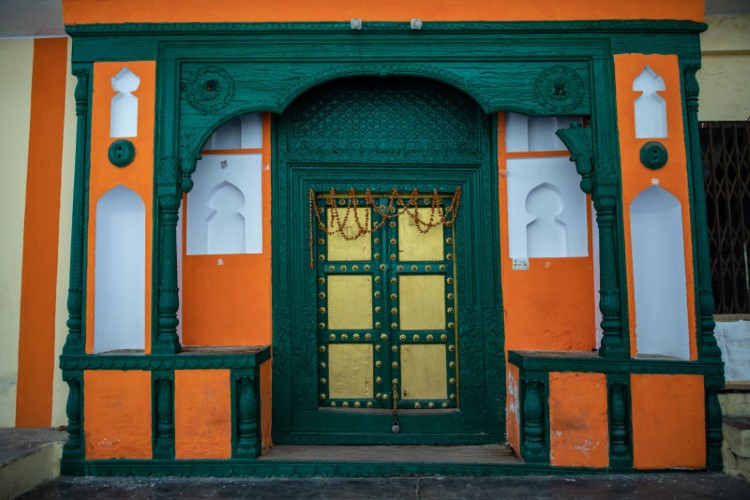
The Incongruences of Pilibhit, April 2022
Much of this urban topology is rapidly changing and giving way to modern, ugly and characterless cement, steel and glass structures. It was thus a pleasant surprise exploring the old town where glimpses of an elegant construction heritage were yet visible.

Aarchitectural beauty of grand homes
Much of this past architectural beauty of grand homes, places of work and worship was generated by sugar-mill owners, money lenders and traders who generated vast wealth for themselves as a product of sugarcane grown as a cash crop during and since the times of the British. Like today, however, then too there were vast settlements of the poor surrounding the opulence and beauty of the wealthy. Their humble homes and places of work also held elements of the traditional architecture and organic materials as an integral part of the heritage of the town.
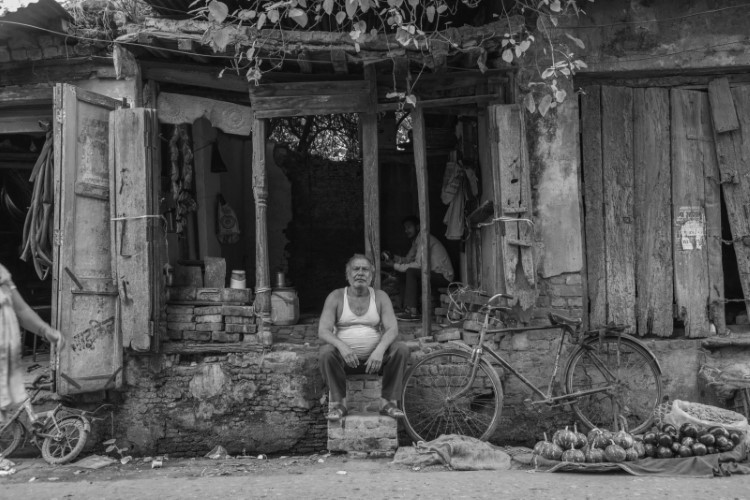
The Incongruences of Pilibhit, April 2022
An old-world sensibility was very much alive in my interactions with people, everyone eager to chat and become friends. The shops of the tailor, dentist and the artisanal goldsmith oozed history and character from their crumbing wooden fronts, the weathered wooden pillars, the floor seating, the very Indian tradition of taking off footwear outside the shop and home.
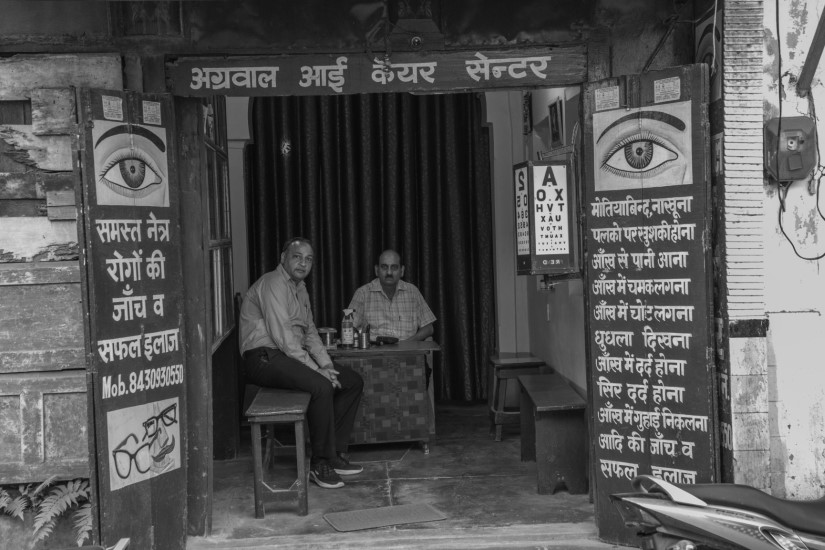
The Incongruences of Pilibhit, April 2022
The narrow lanes host amazingly beautiful temples, homes and commercial buildings. Many are being demolished to make way for modern structures, though none of them are even a patch on the beauty of what they replace. Modernity has condemned architecture to mediocrity and sameness of a terrible kind, it's as if all aesthetics have fled our land in these times.
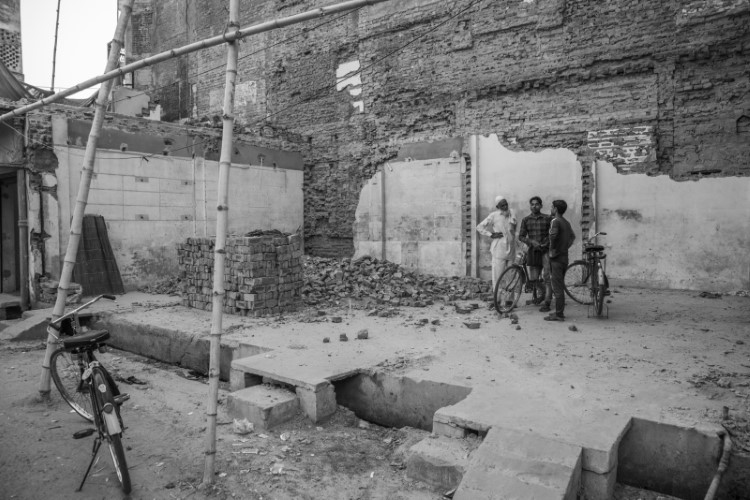
The Incongruences of Pilibhit, April 2022
Hidden signs of insecurity were visible in the old style horizontal grills that slide on little wheels on rails, specially outside the homes of the wealthy and of course the temples. Thieves and dacoits abound.
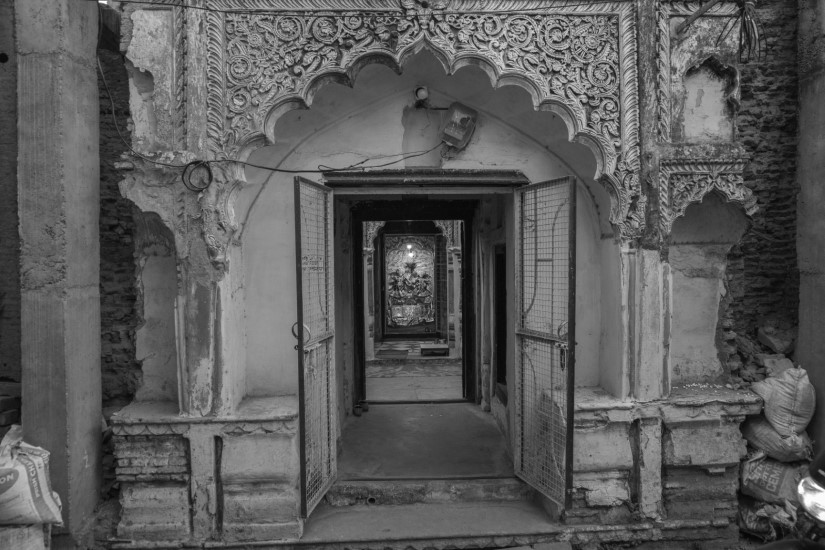
The Incongruences of Pilibhit, April 2022
The Jama Masjid is stunningly beautiful and, for a welcome change, recently aesthetically renovated. The multiple janamaz carpets laid wall-to-wall within the prayer hall with a qibla for each worshipper were spanking new and clean, the walls all around were freshly whitewashed and painted, new construction had been undertaken carefully in white marble and in the same style as the original, and the entire masjid area well maintained. Though, of course, when I wandered the lanes surrounding the masjid they were as filthy as expected. The filth was reassuring, reminding me where I was.
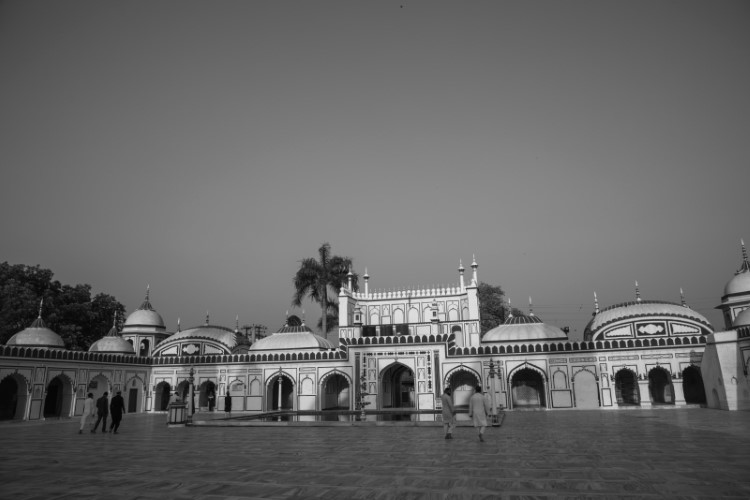
Stunningly beautiful - Jama Masjid
The built heritage of small towns like Pilibhit is remarkable, worth preserving and documenting as modernity races to extract its toll. However, the immense pressure of our growing population on nature is only going to increase as this crush of people go about their daily lives. More industry, economic output, jobs, construction, motor vehicles, and more exploitation of the land through cash crop agriculture.
It’s deeply unfortunate that we don’t measure, plan and invest thought and capital for a future beyond human lives and unending demands. Our democratic priorities for investment are constructed only for the short-term economic benefit for Homo Sapiens. Can we blame only the politicians we vote to power, or a callous bureaucracy? There is 730 square kilometers of reserve forest in Pilibhit for which society should provide adequate resources to those we have mandated to manage it. It is clear that this won’t happen, though, as we continue to disregard Prakriti.
What we can do till we figure it out is bathe our souls in the air and sounds of the forest that remains.
